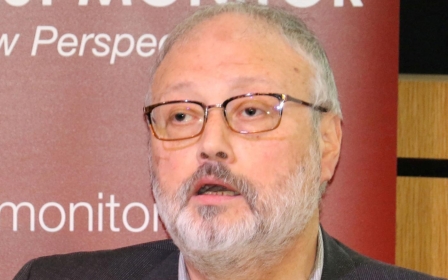Saudi 'government agents' killed Khashoggi, lacklustre US human rights report finds
Saudi "government agents" murdered journalist Jamal Khashoggi last year, an annual US State Department report has acknowledged, without identifying the individual perpetrators or assigning responsibility to top Saudi officials.
In the document released on Wednesday, Washington accuses Riyadh of a myriad of human rights abuses, including "unlawful killings; executions for nonviolent offenses; forced renditions; forced disappearances and torture of prisoners and detainees".
But Khashoggi, a Saudi government critic and Washington Post columnist, is only mentioned in two paragraphs in the 21,000-word section dedicated to Saudi Arabia.
"On October 2, Jamal Khashoggi, a prominent Saudi journalist who lived abroad in 'self-exile,' was killed by government agents during a visit to the Saudi Arabian consulate in Istanbul, Turkey," the report reads.
"The government initially claimed he had left the consulate in good health but changed its story as facts came to light."
Late last year, the CIA concluded that Saudi Arabia's powerful crown prince, Mohammed bin Salman, was behind the murder. The US Senate also passed a unanimous resolution asserting that he was responsible for the crime.
However, Michael Kozak, an envoy from the US State Department's Bureau of Democracy, Human Rights, and Labor, said the report does not note bin Salman's involvement in the murder because it relies on "facts" and not speculation.
"There are two governments that have criminal jurisdiction over the case, the Turkish government and the Saudi government, and they're pushing towards a genuine, transparent, thorough, factual investigation," Kozak told reporters at a briefing on Wednesday.
"Until we see that, trying to speculate over who might or might not have been involved is just not productive."
That echoes US President Donald Trump, who has refused to denounce bin Salman, or answer calls from American lawmakers and activists to release the administration's findings on Khashoggi's murder.
Last month, the White House ignored a deadline, mandated under the Global Magnitsky Act, to deliver a report to US lawmakers identifying those responsible for the crime.
Heightened scrutiny
On Wednesday, Kozak declined to say whether the State Department has reviewed the CIA's findings on who killed the journalist.
But he said that State Department officials generally use resources from intelligence agencies, including classified information, to write documents like the annual human rights report.
Despite changing their official story and eventually admitting that Khashoggi was killed inside the country's Istanbul consulate, the Saudi authorities have continued to deny that bin Salman was involved in the plot.
A Saudi public prosecutor has said that 11 individuals have been charged in relation to the crime, with five of them facing the death penalty.
The identities of the suspects, however, have not been released.
Still, the State Department's report appears to suggest that the Saudi investigation is credible.
"King Salman pledged to hold all individuals involved accountable, regardless of position or rank," it reads.
Khashoggi was killed after visiting his country's consulate in Istanbul to obtain personal paperwork and the whereabouts of his remains are still unknown.
"In 2016 authorities reportedly banned Khashoggi from writing, appearing on television, and attending conferences due to remarks he made that were interpreted as critical of foreign and Saudi government officials, according to multiple media sources," the report reads.
Khashoggi's death has led to heightened scrutiny of Washington's ties to Riyadh, as well as Saudi Arabia's human rights abuses, including a Saudi-led coalition's war in Yemen.
In fact, US lawmakers have pushed since late last year to end US support for Riyadh's war efforts.
Middle East Eye propose une couverture et une analyse indépendantes et incomparables du Moyen-Orient, de l’Afrique du Nord et d’autres régions du monde. Pour en savoir plus sur la reprise de ce contenu et les frais qui s’appliquent, veuillez remplir ce formulaire [en anglais]. Pour en savoir plus sur MEE, cliquez ici [en anglais].





